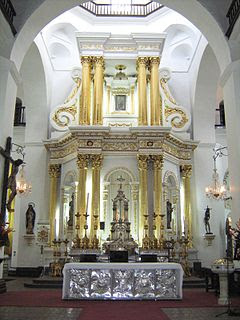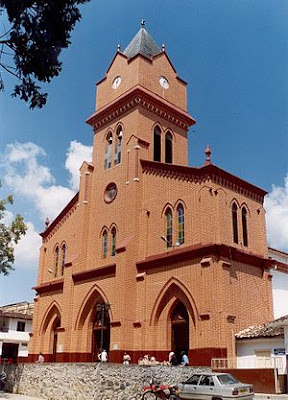Pioneer Bishops of Arkansas
This blog will discuss bishops that served in Arkansas up to 1900. For more information about Arkansas, see my blog of December 21, 2016.
The first Catholics to visit what is now Arkansas were Spanish explorers led by Hernando de Soto, accompanied by Spanish priests, in 1541. Over 100 years later, French explorer, Louis Joliet, accompanied by Jacques Marquette, a Jesuit priest, came to the mouth of the Arkansas River in 1673. Henri de Tonti, another French explorer, founded Arkansas Post, the first European settlement, in 1686 on the Arkansas River about 30 miles from the river’s mouth. European settlers were few, however, and by 1803—when Arkansas became part of the United States—there were only about 400 such settlers within the state. Catholic missionaries, such as Father Nicholas Foucault, had visited the Native Americans since the time of de Soto and won a few converts. Priests from New Orleans and St. Louis made periodic visits to the few Catholics throughout the first 40 years of the 19th Century. The first Catholic school in Arkansas was founded in 1838 at St. Mary’s mission, near Pine Bluff.
The 1840 census, taken four years after Arkansas became a State, found that Arkansas had about 100,000 people. Washington County was the largest county with a population of about 7,000, followed by Pulaski and Hempstead Counties with about 5,000 people each. Pope Gregory XVI created the Diocese of Little Rock in 1843, which at the time consisted of Arkansas and the Indian Territory (now Oklahoma). The following year, when the first Bishop of Little Rock, Andrew Byrne, arrived in Arkansas, he found less than 1,000 Catholics spread throughout the State and served by two Catholic churches. In 1891, Pope Leo XIII created the Vicarate Apostolic of the Oklahoma and Indian Territory, and the Diocese of Little Rock and the State of Arkansas shared the same boundaries.
Andrew J. Byrne was born in Ireland in 1802. He was a student in Ireland in 1820 when Bishop John England of Charleston, South Carolina, recruited him for service in the United States. Byrne was ordained a priest for the Diocese of Charleston in 1827. He served the Diocese as a pastor and as vicar general until 1836, when for reasons unknown, he relocated to New York. He served as a pastor in Manhattan until he was appointed first Bishop of Little Rock, Arkansas, in 1843.
The new Diocese of Little Rock included Arkansas and what is now Oklahoma and served less than a thousand Catholics in a frontier state whose people were often hostile to Catholics. While never having more than 10 priests, Bishop Byrne was able to build a few new parishes, a dozen schools, and more than two dozen missions. He also oversaw the construction of the first Cathedral of St. Andrew in Little Rock in 1845. Byrne avoided political issues, including the legality of slavery. Byrne established a colony of Irish families in Fort Smith in 1849, but it was eventually unsuccessful. He also brought the Religious Sisters of Mercy from Ireland to establish Mount St. Mary Academy in 1851—the oldest educational institution in Arkansas. He died in 1862.
Edward M. Fitzgerald was born in Ireland in 1833 and came with his parents and seven siblings to the United States in 1849 to escape the potato famine in Ireland. He was educated in Missouri, Ohio, and Maryland before being ordained a priest for the Archdiocese of Cincinnati in 1857. He served as pastor of St. Patrick’s church in Columbus from 1857 to 1866, where he healed divisions between his Irish and German parishioners—Fitzgerald was half German. He became an American citizen in 1859 and ministered to soldiers of both sides during the Civil War. Fitzgerald was appointed the second Bishop of Little Rock in 1866, a position he initially refused until ordered by the Pope to accept.
Bishop Fitzgerald was appointed Bishop at the age of 33—the youngest bishop in the Unites States at that time. He sought to improve the fortunes of a war-torn diocese with a few thousand Catholics in nine churches served by half a dozen priests, by recruiting priests and lay people from Europe. After the Civil War, Germans came to Logan, Conway, and Perry Counties, Poles to Little Rock, and Italians settled in the far northwestern corner of the state and in Little Rock. Bishop Fitzgerald voted against the doctrine of papal infallibility at the First Vatican Council in 1870—one of only two bishops to do so—because of fears that it would hinder evangelization in Arkansas. He also established four Catholic hospitals (including St. Vincent’s in Little Rock, the first hospital in Arkansas) and many parishes and schools and, in 1881, dedicated the current Cathedral of St. Andrew. He also established an African-American parish in Pine Bluff in 1895. A stroke left him paralyzed in 1900, but he served as Bishop until his death in 1907. At the time of his death, there were 20,000 Catholics in the Diocese, served by 41 parishes, 32 missions, 60 priests, and 272 religious sisters.

















































